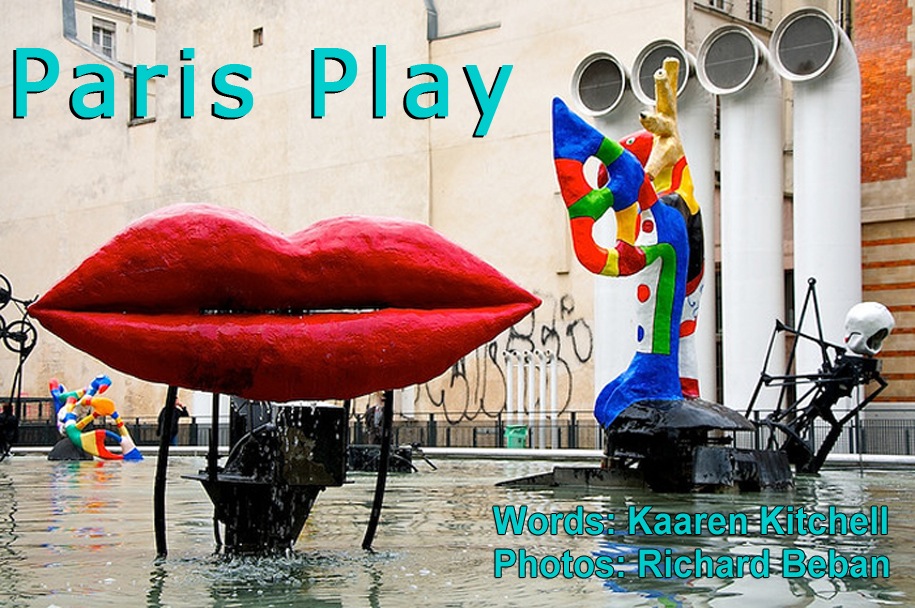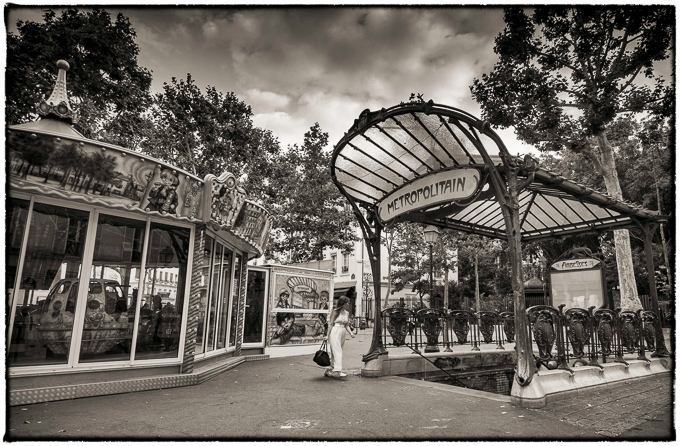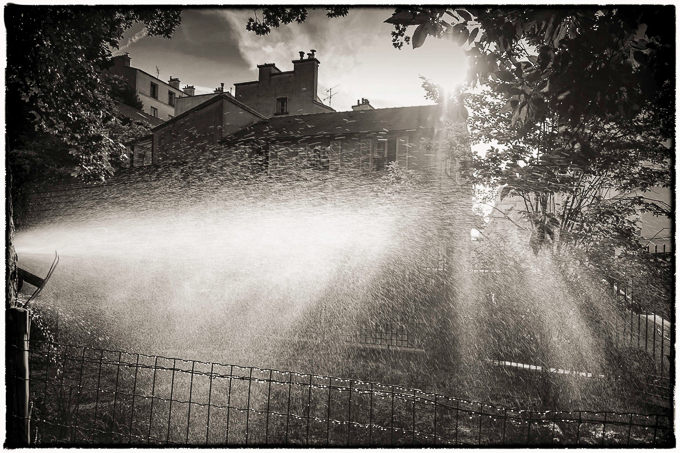It's Just a Kiss Away
 10.31.2013
10.31.2013

I decided to swing by Shakespeare and Company at the beginning of my walk. I'd quickly pay for the book of poems I'd ordered from the U.S., Anna Journey's, Vulgar Remedies. But there was a crowd in front of the bookstore. The sign said Halloween Celebration of Dracula. Book Purchases after the Event.
Ah, rats! It was already too crowded inside to enter. But here was Ben at the door, asking me if I wanted to get in. And Alex asking if I'd come by to pick up my order. Mutual appreciation: how we all love it. Alex went in and rang up the book and brought it outside to me.
I'd now heard a bit of Jacques Sirgent, of Paris' Musée des Vampires, speaking over the loudspeaker about Bram Stoker's novel, Dracula. Compelling, but I needed a walk more. Maybe I'd stop by on the way home.

Halloween was in the air beyond the bookstore, too. At Place St.-Michel, two young men with guitars were playing Sympathy for the Devil. Above the fountain, Saint Michel was vanquishing the devil, with two seated dragons to either side. I remembered reading that "dracul" in Romanian means "the dragon" (drac "dragon" and ul "the") and that later the word meant "the devil."
On rue St. André-des-Arts, I passed a Greek restaurant open to the street. A man stood in his stall next to a giant hanging slab of meat, his face so red and immobile, he looked like a figure in a wax museum.
I walked for an hour, and circled back around to join the crowd in front of Shakespeare and Company. Alex and Ben sat in chairs in front of the shop, their backs to the door. Jacques Sirgent's voice was spinning strange tales.
Sirgent asked if anyone knew why Bram Stoker set the tale in London. Apparently no one did. Because, he said, it was the wickedest city in Europe during the second half of the nineteenth century; London had the highest rate of women murdering their babies.

And why was that? Young women who came from the country to work as maids and nannies in the houses of the rich were raped by their employers. Because unmarried pregnancies were considered so shameful at the time, the women would give birth and flush the babies down the toilet. The women who were caught were arrested. But since it was in neither the perpetrator's nor the victim's interests that the information be published, the women were sentenced to prison for three years, and released after one year. That's crime times three: Woman raped, child murdered, woman imprisoned. Victim times three.
I looked up at the gold-framed portrait of Shakespeare above the window. A red leaf had landed on the bottom of the frame. A spider web fanned down from the roof to the top of the frame. Of course I noticed it--we'd been dusting all our bookshelves earlier that day.
Why were vampires invisible in mirrors? asked Monsieur Sirgent, and answered his own question with a question: could it be because the vampire represents the darkness inside all of us? Our own inner Dracula? And, he continued, there was a connection to the troubadour love tradition. At one time in Europe, all love relationships were sealed with the blood of the couple.

I read a few of Anna Journey's poems later that night. Here's a bloody love poem for you from her book:
Vulgar Remedies: Tooth and Salt
After extraction, a tooth is smothered
in salt and burned to stop a wild
animal from finding it. Because if
a fox gnawed it you'd grow a grey
fang and if a bear chewed it you'd wear
its yellow snaggletooth. You've taken me
to the exhibit called Vulgar Remedies: Belief,
Knowledge and Hypersymbolic
Cognition in L.A.'s Museum
of Jurassic Technology. We'd married three
weeks earlier on a seaside cliff. If
a person doesn't burn
her childhood teeth, I read on the exhibit's
glass case, she's cursed to search for them
after death in a pail of blood. Suddenly,
I knew what I should've written
in my wedding vow: how forever feels
too vague a word, that I'll stay
beside you until we rise in the shine
of our fangs, our silver pails
filled with blood. We'll recover
all we've lost: our bodies, the blue-slate
roof of our home, each frail and traitorous,
old, unsalted bone.

Poem (c) 2013 by Anna Journey.

























